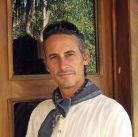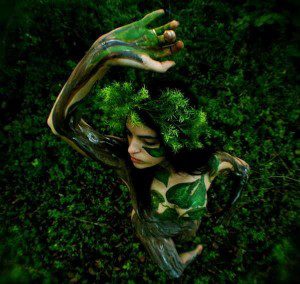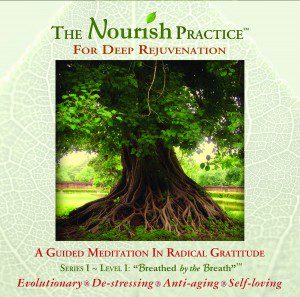By Jack Adam Weber L.Ac., Dipl. C.H.
Contributing Writer for Wake Up World
If you want to awaken all of humanity, then awaken all of yourself. If you want to eliminate suffering in the world, then eliminate all that is dark and negative in yourself. Truly, the greatest gift you have to give is that of your own self-transformation.
– Attributed to Lao Tzu (even if not, it still works!)
There is a perspective that we can rid ourselves of emotional wounds through physical acts such as rolfing, “purging,” yoga, or tapping on meridians. To engage deep emotional healing, these methods can aid the process some, but they are not replacements for deeply embodying and surrendering to our emotions in order to fully feel them—to let them feel us, more accurately.
Indeed, these methods can give a false hope when viewed as a comprehensive body of emotional work. They precisely offer shortcuts to the transformational work of consistently and deeply feeling our feelings—letting the emotions of grief, remorse, despair, anger, and helplessness work on us—which seems a truer definition of surrender and the promise of both transformation and liberation.
[pro_ad_display_adzone id=”110028″]
One reason for this limiting perspective, I believe, is that we view negative emotions as things to get rid of. We don’t understand that they have great intellectual and moral lessons to teach us, and especially, great changes to effect in our hearts, when we allow them to change us. They unleash our passion and creativity, especially when we do not close down to them, but let them have their way with us. After their work is done, they leave, in proportion to how much we allowed ourselves to be changed. When we allow our hearts to remain open as result of their visitation, their gifts are ours to keep and share with the world.
This deeper embodiment of emotions is a process I call “letting the difficult emotions feel us,” which allows the forces in the emotions to deepen and consecrate passion, compassion, empathy, and creativity in us, in addition to clearing our pain. Since the emotions are forces of nature largely beyond our control and that arise naturally in us—just as wind picks up on a still plain, or the vicissitudes of waves on the open sea—to trust in the their shaping of us is to trust in the inherent energy of Nature.
I witness in my healing practice and among friends (if you will allow me such discernment in the spirit of compassion), that many lack a consistent and “quiet,” deeply frank relationship with the depths of their emotional body. It also is worth noting here that many meditation techniques and “spiritual” paths exacerbate this condition by dissociating and disconnecting us from the visceral experience and processing of our emotions, precluding us from reaping the benefits described here.
A potent way to transform deep pains is to give oneself wholly to these emotions and let them empty, rearrange, dissolve, and resurrect you . . . of their own accord, just as wind and water and sunlight change the landscape of the Earth. This is to give oneself truly to Nature, for the emotions are the forces of Nature run through us. This is natural living at its essence and most poignant. For this, it can be helpful to seek the help of a good body-centered therapist, who can be a guide and support for navigating the storms of emotion that course through as well as have gotten stuck in the earthy microcosms we are.
“Are you willing to be sponged out, erased, canceled, made nothing? If not, you will never really change.”
—D.H. Lawrence
All this is also the purview of Chinese medicine, if one understands its metaphors deeply and poetically, not just literally—as life, death, and rebirth. Indeed, in Chinese medicine, each emotion is associated with a season of the yearly cycle, which cycle is the process of life, death, and rebirth. Each emotion is seen to be as natural as summer, spring, winter, and autumn. One can only truly change and be reborn when he surrenders to what annihilates, as in winter and autumn, with more focus on the process rather than the result. For the tree, or the dune, or the shore does not contemplate its final form (so it seems), yet somehow we, ironically, always seem to find what nature creates as beautiful. Can we, then, trust in the emotions that tear and mend, dissolve and resurrect, as all equally beautiful? Can we embrace these emotions in ourselves, then, just as we embrace the seasons of the year in the body of Nature, which we find beautiful, even their harshness?
So often though we say, yikes!
That’s not love; that’s not light; that’s not ascension; that’s not . . . blah, blah, blah . . . I ask you to consider that this resistance is your ego afraid of its death, which stymies your growth and dissolving of psychological pain. A predominant focus on light in the context of transformation is often a fear of fear! How about: be the fear, let yourself be undone. Surrender. Then you can be re-made . . . but only after being dissolved! If you want to “eliminate all that is dark and negative in yourself,” you must first embrace it. This is a corollary to what Jack Kornfield says in the context of spirituality in his book A Path With Heart: “Before you can be no one you have to be someone.”
For this, we must see the process metaphorically, not only literally. A failure to see the world symbolically is a hidden disease of our times, no doubt exacerbated by a profit-driven media. Symbolic illiteracy (as my friend Michael Proctor has described it) is at the core of so much deficit and violence because we will only embrace what we currently see as light; we will only promote what we do not fear; and we will consume only what feels good in the moment. Bitter medicine is not the modern way. But it is the way to something humanity left behind when it unilaterally embraced the Enlightenment as the only light, in the sky and mind.
When you surrender to and acknowledge pain, you will not actually die. This is to embrace the hidden light of the body and the Earth. This light is harvested paradoxically, not literally! It means that we have go dark before we get to more light. Remember, your ego is not the poet for this process! So we must surrender the fearful mind that is afraid of dying, which is only a taste a literal death! We must not focus on the light when it is time to go down, as in autumn and winter. To do so is the clinging that prevents us from deeply being transformed, from fully living, which happens in the blessed dark.
All of this is also to save the world in our own small way by changing ourselves, by allowing the little chunk of Nature that we are to be remade—as body, emotion, and something else that can’t be named. Here’s a poem to end, and in order to continue. Blessings on your journey. . .
CONGRATULATIONS
If you are hopeless, congratulations.
You have been gifted the priceless opportunity to become more.
Let the unspeakable faith that carries you one day to the next
In naked survival lift you from where you never could have tried
Had you even some figment mustering of completion,
Like a specter carrot before your eyes, a nipple for your mind.
Listening now, can you hear deep within the dark blind pools
That desire to die absolutely to the scaffolding of a patterned life,
As strong as the thundering declaration you have to live?
At this moment, neither could you choose, for they are inseparable twins.
Restoration comes when, without the common effort of strength,
You are risen, reborn of indestructible nuts and bolts held so fast
To your core because you sat there all those days and longer nights
And watched the invisible repair you from nothing
Into the elaborate machine of beauty you are today.
—Jack Adam Weber
Updated September 2014
The Nourish Practice
Jack Adam Weber’s “The Nourish Practice” is an easy, guided meditation-Qi Gong practice in radical gratitude and self-love. It is an Earth-based, body-centered practice — at once physiological and mythological — that is deeply relaxing and replenishing, especially for modern-day burn-out syndrome, and requires little physical effort.
The Nourish Practice “resets your nervous system” and fosters a rich inner life. You can purchase The Nourish Practice as a CD or Digital Download here.
Previous articles by Jack Adam Weber:
- Relationships: The Costs of Staying When We Should Leave
- Emotional Work
- Choosing a Partner – How to Avoid Relationship Suicide
- Re-Thinking Love: Why Our Hearts Must Also Be Minded
- Spirituality – Reality Check
- 11 Crucial Tips for Better Digestive Health
- Shadow Work: Becoming a Sustainable Light Worker (Part 1)
- Oneness in Action: The GMO Eradication Movement
- After the Hurricane: Lessons from the Heart of Nature
- Relationships: How They Can Make Us Happier
- Heartbreak – Loving Ourselves Through Difficult Times
About the author:
 Jack Adam Weber, L.Ac. is a Chinese medicine physician, author, celebrated poet, organic farmer, and activist for body-centered spirituality. His books, artwork, and provocative poems can be found at his website PoeticHealing.com. He is also the creator of The Nourish Practice, an Earth-based rejuvenation meditation. Weber is available by phone for medical consultations and life-coaching.
Jack Adam Weber, L.Ac. is a Chinese medicine physician, author, celebrated poet, organic farmer, and activist for body-centered spirituality. His books, artwork, and provocative poems can be found at his website PoeticHealing.com. He is also the creator of The Nourish Practice, an Earth-based rejuvenation meditation. Weber is available by phone for medical consultations and life-coaching.
You can connect with Jack Adam Weber on Facebook or by emailing [email protected].
[pro_ad_display_adzone id=”110027″]








